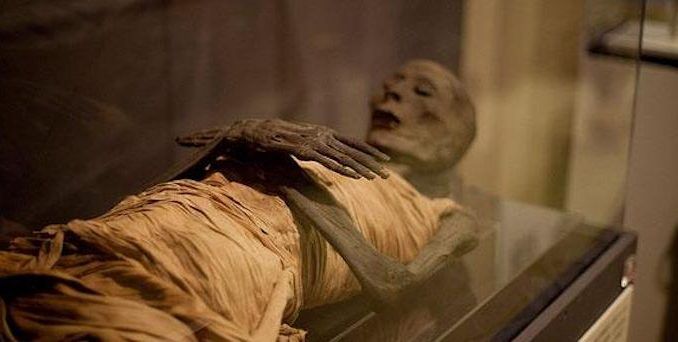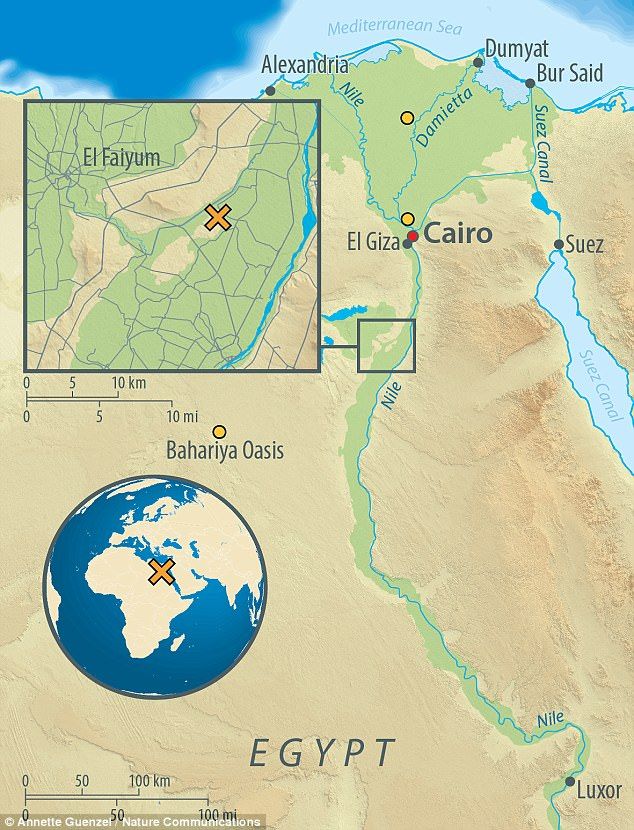
Scientists analysing ancient DNA from Egyptian mummies have discovered they overwhelmingly share genes with people from Europe and not Africa, as previously believed.
The first ever full-genome study of mummies dating from 1400 BC to 400 AD found that the ancient Egyptians were closely related to populations in the Levant – now modern day Turkey, Jordan, Syria, Lebanon and Israel.
Daily Mail reports: They were also genetically similar to Neolithic populations from the Anatolian Peninsula and Europe. In plain English, Egyptians were related to Persians, Rome and Greece whom were all white European people.

BYPASS THE CENSORS
Sign up to get unfiltered news delivered straight to your inbox.
You can unsubscribe any time. By subscribing you agree to our Terms of Use
The groundbreaking study used recent advances in DNA sequencing techniques to undertake a closer examination of mummy genetics than ever before.
The study, published in Nature Communications, found that modern Egyptians who are actually just Arab invaders, share more ancestry with Sub-Saharan Africans than ancient Egyptians did.
The data shows that modern Egyptians share approximately eight per cent more ancestry on the nuclear level with Sub-Saharan African populations than with ancient Egyptians.
Egypt is a promising location for the study of ancient populations because it was a world-wide trading hub.
This is likely the reason that ancient Egyptians had such a diverse genetic heritage, the authors, from the University of Tuebingen and the Max Planck Institute for the Science of Human History in Jena, said.
‘The population history of Egypt is complex because it is found at the ispus of Africa, the gateway to a continent, and has seen much historical turnover,’ Max Planck Director for the Science of Human History and study lead author Professor Johannes Krause told MailOnline.
‘Ancient Egypt in the 1millenium BC had been dominated by many foreign powers.
The team’s research involved unravelling the genetic history of Egyptians by comparing DNA samples taken from both modern and ancient natives.
The researchers were aiming to establish an exhaustive genetic database to study the ancient past of Egypt for the first time.
‘It has been much debated whether foreign dominations such as Assyrians, Nunbians, Greeks or Romans changed the gene pool of ancient Europe, making them more or less African,’ Professor Krause told MailOnline.
‘We wanted to test that and found that there is genetic continuity between the old kingdom and Roman period.

HOW THE STUDY WAS DONE
Mummified human DNA is normally difficult to study because of chemical treatment of the bodies before mummification, and due to the warm environment they are kept in.
But new genetic techniques used by the team allowed them to study mummified DNA in greater detail than ever before.
The team sampled 151 mummified individuals from the archaeological site of Abusir el-Meleq, along the Nile River in Middle Egypt.
In total, the authors recovered mitochondrial genomes from 90 individuals, and genome-wide datasets from three individuals.
The genome-wide samples are the first ever taken from mummified remains.
The team compared this ancient Egyptian DNA to genome samples from modern Egyptians to analyse differences in genetic makeup.
‘However in the last 1,500 years Egypt became more genetically African, whereas the ancient Egyptians showed almost no sub-Saharan African ancestry and high affinity to ancient Near Eastern and European populations.’
The team sampled 151 mummified individuals from the archaeological site of Abusir el-Meleq, along the Nile River in Middle Egypt.
Recent advances in the study of ancient DNA present an intriguing opportunity to test existing understandings of Egyptian history using the ancient genetic data.
The new study managed to extract accurate, full-genome DNA data from three ancient Egyptian mummies, and usable segments of DNA from 90 mummies.

WHY IS IT DIFFICULT TO EXTRACT MUMMY DNA?
Although some of the first extractions of ancient DNA were from mummified remains, scientists have previously raised doubts as to whether genetic data from mummies would be reliable even if it could be recovered.
The hot Egyptian climate, high humidity levels in many tombs and some of the chemicals used in mummification techniques contribute to DNA degradation.
Scientists had therefore assumed that the long-term survival of DNA in Egyptian mummies was unlikely, making mummy genetic data unusable.
But using recent advances in modern genetics technology, the new study managed to extract accurate full-genome DNA data from three ancient Egyptian mummies, and usable segments of DNA from 90 mummies.
The team used next-generation sequencing methods to read stretches of any DNA present in a sample and retrieve those that resembled human DNA.
The complete reads allowed the team to spot telltale damage patterns associated only with ancient DNA.
This makes the new study’s results much more reliable than those of any mummy DNA research that has come before.
The ability to extract nuclear DNA from such mummies, as well as show its reliability using robust authentication methods, is a scientific breakthrough that opens the door to further direct study of mummified remains.
The team used next-generation sequencing methods to read stretches of any DNA present in a sample and retrieve those that resembled human DNA.
The complete reads allowed the team to spot telltale damage patterns associated only with ancient DNA.
This makes the new study’s results much more reliable than those of any mummy DNA research that has come before.
The extraction of reliable nuclear DNA from Egyptian mummies is hence a breakthrough in genetics that opens the door to more detailed studies of mummified remains.
They were able to use the data gathered to test previous hypotheses drawn from archaeological and historical data, and from studies of modern DNA.
Professor Alexander Peltzer, from the University of Tuebingen, said: ‘In particular, we were interested in looking at changes and continuities in the genetic makeup of the ancient inhabitants of Abusir el-Meleq.
‘We wanted to test if the conquest of Alexander the Great and other foreign powers has left a genetic imprint on the ancient Egyptian population.’
The team wanted to determine if the investigated ancient populations were affected at the genetic level by foreign conquest and domination during the time period under study, and compared these populations to modern Egyptian comparative populations.
The study found that ancient Egyptians were most closely related to ancient populations in the Levant (modern day Turkey, Syria, Jordan, Israel and Lebanon), and were also closely related to Neolithic populations from the Anatolian Peninsula and Europe.
Coauthor Wolfgang Haack, group leader at the Max Planck Institute, added: ‘The genetics of the Abusir el-Meleq community did not undergo any major shifts during the 1,300 year timespan we studied, suggesting that the population remained genetically relatively unaffected by foreign conquest and rule.’


This article is very misleading and is far from the truth. Firstly, Turkey, Jordan, Syria and Lebanon and Israel are countries that are located in the Middle East which is not Europe. I also read the article on the DNA taken from Egyptian mummies that were found in in Middle Egypt. Here is a direct quote ” all our genetic data were OBTAINED FROM A SINGLE SITE in Middle Egypt and may not be representative for all of ancient Egypt.” In the South of Egypt, the authors wrote, SUB-SAHARAN influences may have been stronger.”
The study also stated this “DNA was closely related to the people along the east Mediterranean (who by the way are not Europeans) and the DNA SHARED genetic material with people of the Turkish peninsula and Europe. THE KEY WORD IS SHARED. Yes, that’s correct shared genetic material of Europe does not necessarily make one white or European because if that were true African Americans would all be white/European because the average African American has at least 25% European DNA and millions of African Americans have significant amounts of European DNA who are not EVEN biracial. Therefore, again SHARED DNA DOES NOT MAKE ONE EUROPEAN.
A good example is Condoleeza Rice former Secretary of State who is African American with 2 black parents. Her DNA results showed that she is 51% Sub-Saharan African, 40% European and 9% Native American. Now I ask you is she Condoleezza Rice European? Why the hell not she SHARES a significant amount of DNA with Europeans and I’m sure it’s more than what was found in those Mummies in Middle Egypt. This article by Sean Adi Tabatabai is Bullshit.
No wonder they got euro DNA, also more the IQ average like europeans to build all that.